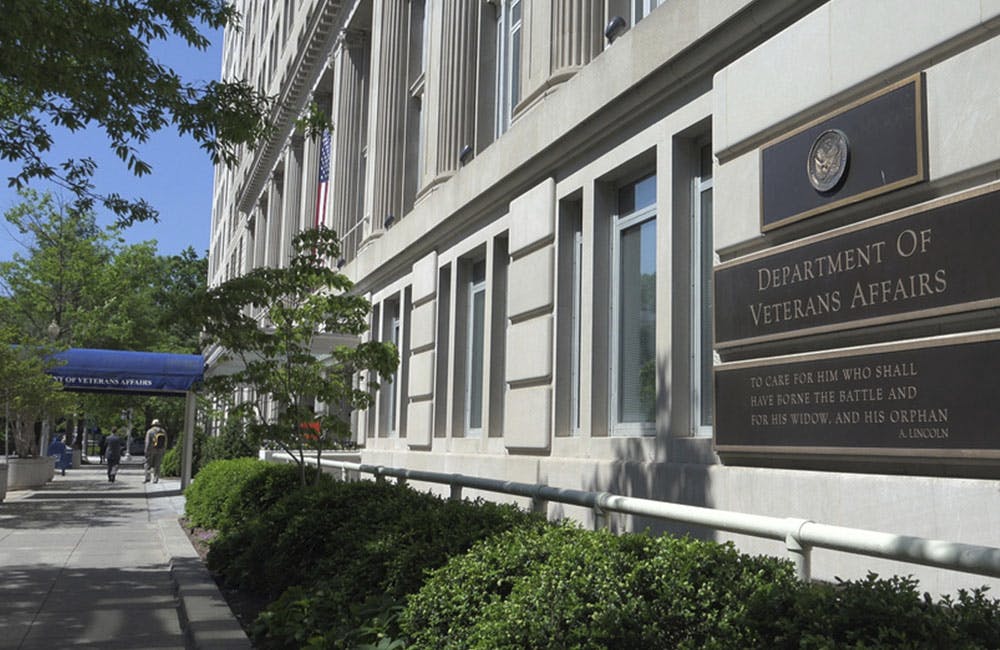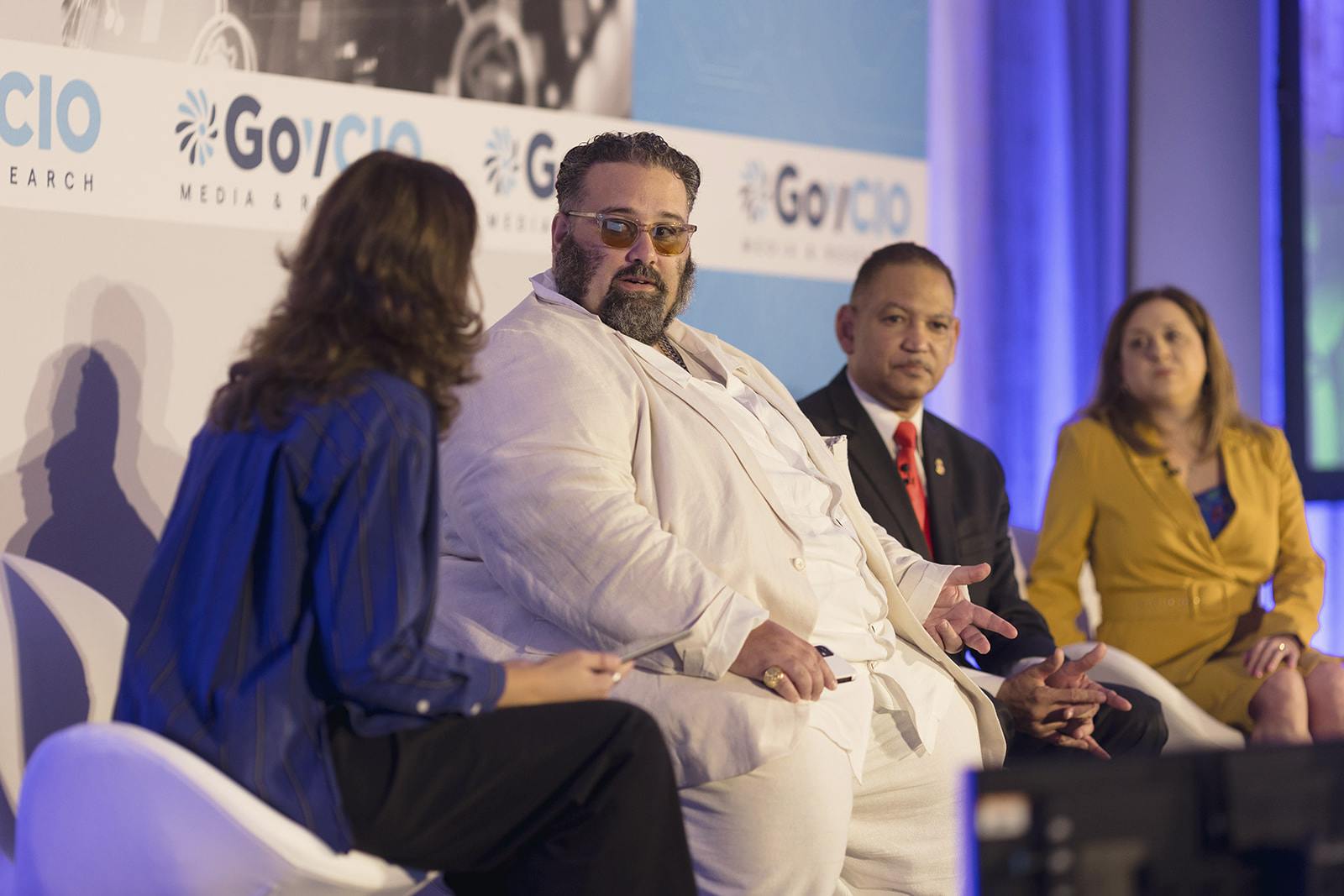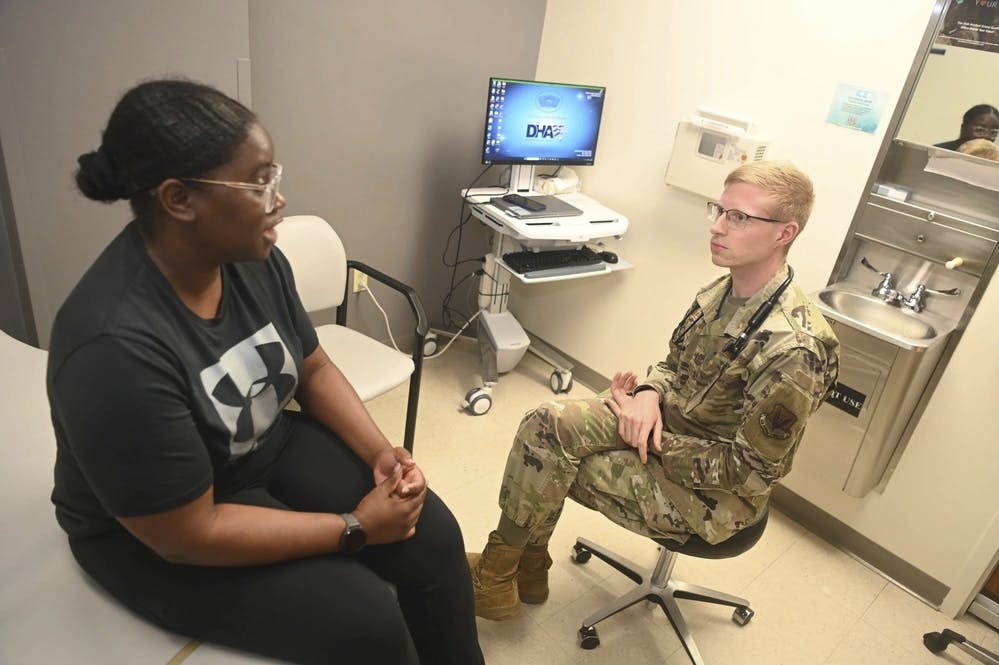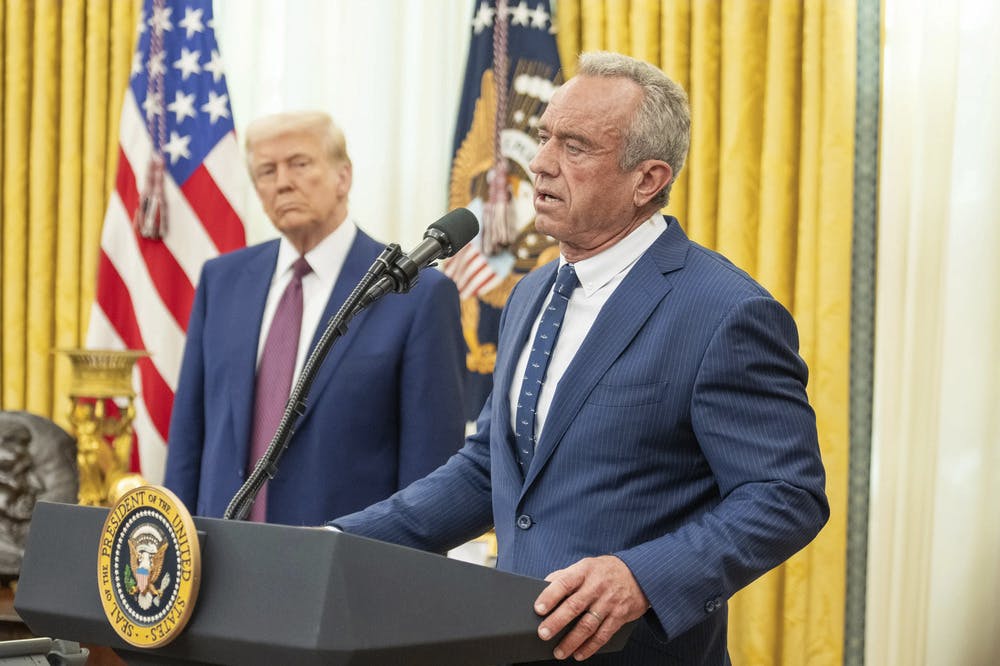VA Restructures Workforce to Cut Costs, Increase Efficiency
The agency is restructuring its workforce to streamline operations, invest in technology and improve veteran services.

The Department of Veterans Affairs is undergoing a massive personnel transformation to refocus resources and funds back to services for veterans, according to VA leadership.
“This will be a thorough and thoughtful review based on input from career VA employees, senior executives as well as the top VA leaders. Our goal is to reduce VA employment levels to 2019 end-strength numbers — roughly 398,000 employees — from our current level of approximately 470,000 employees,” VA Secretary Doug Collins said in a video message detailing the reduction of the VA workforce by 15%.
Some of the efforts for the federal workforce include a federal hiring freeze, return-to-office mandates and, earlier this month, a workforce optimization executive order.
The administration has said that the reduction in workforce size will enable the agency to serve customers at a veteran-facing level and save millions within the department.
Headcount Reductions Could Add Budget to Veteran Benefits
Trump’s Feb. 11 workforce optimization initiative aims to “significantly reduce the size of government,” calling for agencies to hire one new employee for every four that leave, with exceptions for critical areas such as public safety, immigration enforcement and law enforcement.
Following the order, Collins announced firing over 1,000 employees considered non-essential, which he said would save the department more than $98 million per year.
The agency then dismissed an additional 1,400 employees Feb. 24, which Collins said would save the department an additional $83 million per year that could be put to work delivering care to veterans.
In a video address, Collins said his team is looking at cutting out “waste, fraud and abuse” in the department, and agency employees serving as Department of Government Efficiency (DOGE) liaisons are examining every VA contract to redirect money to veterans.
“To be perfectly clear: these moves will not negatively impact VA health care, benefits or beneficiaries. In the coming weeks and months, VA will be announcing plans to put these resources to work helping veterans, their families, caregivers and survivors,” Collins said in a press release.
In his first major address to a veterans service organization last month, Collins said he will work directly with Congress to improve access to VA and community caregivers and refocus the agency toward speeding up care and cutting bureaucratic red tape.
“The veteran is now first at the VA,” Collins said at the Disabled American Veterans (DAV) Mid-Winter Conference in Arlington, Virginia. “The idea that the veteran has to call a congressman or a senator to get help with the benefits they earn means that the VA has failed. … Failure is not an option.”
In a recent letter to the secretary, Democratic senators have pushed back on the layoffs, urging Collins to “immediately reinstate all of the employees dismissed” and “commit to VA employees and veterans that no additional widespread terminations will occur without advanced notification to Congress, a detailed justification, coordination with service-level leadership and an appropriate assessment of potential impacts on veterans’ health care and benefits.”
Since then, some of these employees have been rehired due to their mission-critical work.
“Congress remains ready to collaborate with you, if you are willing to come to the table and put the needs of our veterans above all else,” the letter said.
VA Returns to the Office
The agency recently welcomed back in-person employees stemming from President Trump’s memo to end remote work across the federal government.
More than 20% of its more than 479,000 employees had telework or remote work arrangements, according to the agency. Some of these employees were mandated to return to the office starting Feb. 24.
The reduction in headcount coupled with the return to in-person work could open the door for new opportunities to drive innovation within the agency. Congressman Morgan McGarvey of Kentucky said in a joint congressional hearing this week that innovative strategies can drive change, but incentives need to be given to employees to pursue them.
“We have so many great people come through the VA, but we don’t have that right incentive to innovate. When they do innovate, they can do cool things,” said McGarvey, pointing at the Enabled Respite Homecare Model VA pilot that gives primary caregivers a respite through the use of substitute caregivers.
“There are opportunities to look at that through the Office of Innovation, to make sure that they can utilize all of the resources they have and the best minds that are out there with new ideas to prevent suicide,” Joy Ilem, national legislative director at Disabled American Veterans (DAV), told congressional leaders this week.
According to an August 2024 Office of Management and Budget (OMB) report to Congress on telework and real property utilization, remote work increased employee productivity and performance “substantially,” while enabling the agency to process more claims and decrease the claims backlog by more than 100,000 between December 2023 and May 2024.
Benefits Expansion Requires Larger Agency Support
President Trump’s strategy is a marked shift from that of former President Biden’s approach to the workforce. Former Biden administration officials at the VA called for hiring more employees to respond to an increase of veteran benefits claims stemming from the PACT Act.
The PACT Act facilitated the need for more employees to keep up with the influx of veterans becoming eligible for additional benefits and care.
More than 5.6 million veterans have been screened for toxic exposures and more than 1 million veterans and their families received disability compensation benefits under the legislation. The VA has delivered over $6.8 billion in benefits to veterans and their survivors.
The number of veterans enrolled in VA health care has increased 33% since the PACT Act was passed, with 333,767 of the 740,000 veterans enrolled through August 2024 coming from PACT Act-targeted populations.
Subsequently, the agency pushed 2022 for an increase in hiring. In 2023, the VA hired more than 61,000 new employees, setting a new record for the agency.
Collins has vowed to continue PACT Act-related care, even as the agency shifts toward a lower headcount, lower costs and increased reliance on community caregivers.
Collins told congressional leaders during his confirmation hearing in January the PACT Act “provides vital health care and benefits to veterans exposed to burn pits, Agent Orange and other toxic substances.”
This is a carousel with manually rotating slides. Use Next and Previous buttons to navigate or jump to a slide with the slide dots
-

VA's Platform One Powers Rapid Innovation to Bolster Digital Services
VA's Platform One accelerates software development timelines from weeks to hours, ultimately enhancing digital services for veterans.
5m read -

Doing More with Less is Muscle Memory for IRS, Former Deputy CIO Says
Darnita Trower discusses her experience, the legacy she’s left behind and how she pushed the IRS to modernize itself,
20m watch -

VA CIO Targets Modern IT and Smarter Workforce Alignment
Agency leaders told lawmakers they are focused on trimming legacy systems and restructuring its workforce to streamline operations.
3m read -

Fed Efficiency Drive Includes Code-Sharing Law, Metahumans
By reusing existing code instead of rewriting it, agencies could dramatically cut costs under the soon-to-be-enacted SHARE IT Act.
5m read -

Trump Executive Order Boosts HBCUs Role in Building Federal Tech Workforce
The executive order empowers HBCUs to develop tech talent pipelines and expand access to federal workforce opportunities.
3m read -

Tracking CIOs in Trump's Second Term
Stay informed on the latest shifts in federal technology leadership as new CIOs are appointed and President Trump's second term takes shape.
6m read -

IHS Prepares to Deploy PATH EHR at Pilot Sites in 2026
IHS targets PATH EHR pilot in 2026, emphasizing governance, collaboration and interoperability as key pillars of the modernization strategy.
4m read -

IRS Makes Direct File Code Public as Lawmakers Debate Program’s Fate
The agency sees the Direct File source code as beneficial to government digital services despite what happens with it in proposed budgets.
5m read -

FEHRM CTO Targets Two-Year Cloud Migration for Federal EHR
Lance Scott touts new EHR tech advancements, including cloud migration, expanded data exchange and AI integration to improve care delivery.
4m read -

Trump Taps Maj. Gen. John Bartrum to Lead VHA
Nominated for VA's top health role, Bartrum brings over four decades of military and public service to the agency.
3m read -

AI Growing in Focus Amid HHS Restructure
Department of Health and Human Services officials see promise in artificial intelligence amid efficiency goals.
4m read -

Federal EHR Leaders Eye Ambient Dictation, Interoperability
Officials from DOD and VA said they are exploring new EHR features such as functionality in offline status and interoperability.
5m read
















